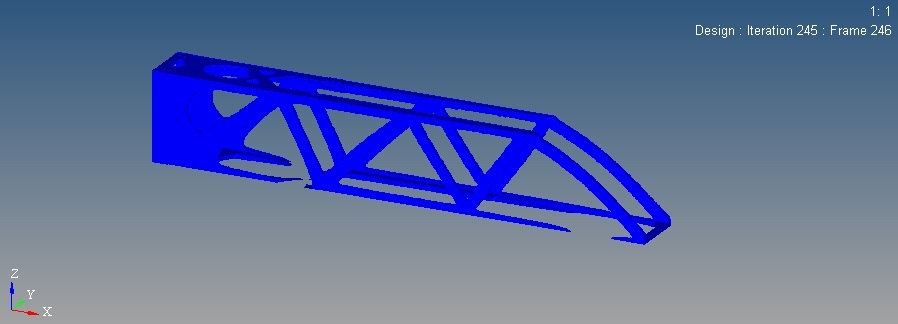Dear Optistruct users,
Currently I am using optistruct in order to optimize a bridge type structure. The objective is to minimize the compliance with a volumeconstraint of 25% of the design volume. I have used a one plane symmetry and after 250 iterations I obtained the following result. To prevent the generation of disconnected sections, I increased the maximum amount of iterations and lowered the object tolerance for the relative convergence criteria. However this had no result. I also have applied a symmetry plane but from the results you can see that the structure not exactly symmetric. Can someone help me to improve my results? your feedback will be highly appreciated.

Regards,
Michael